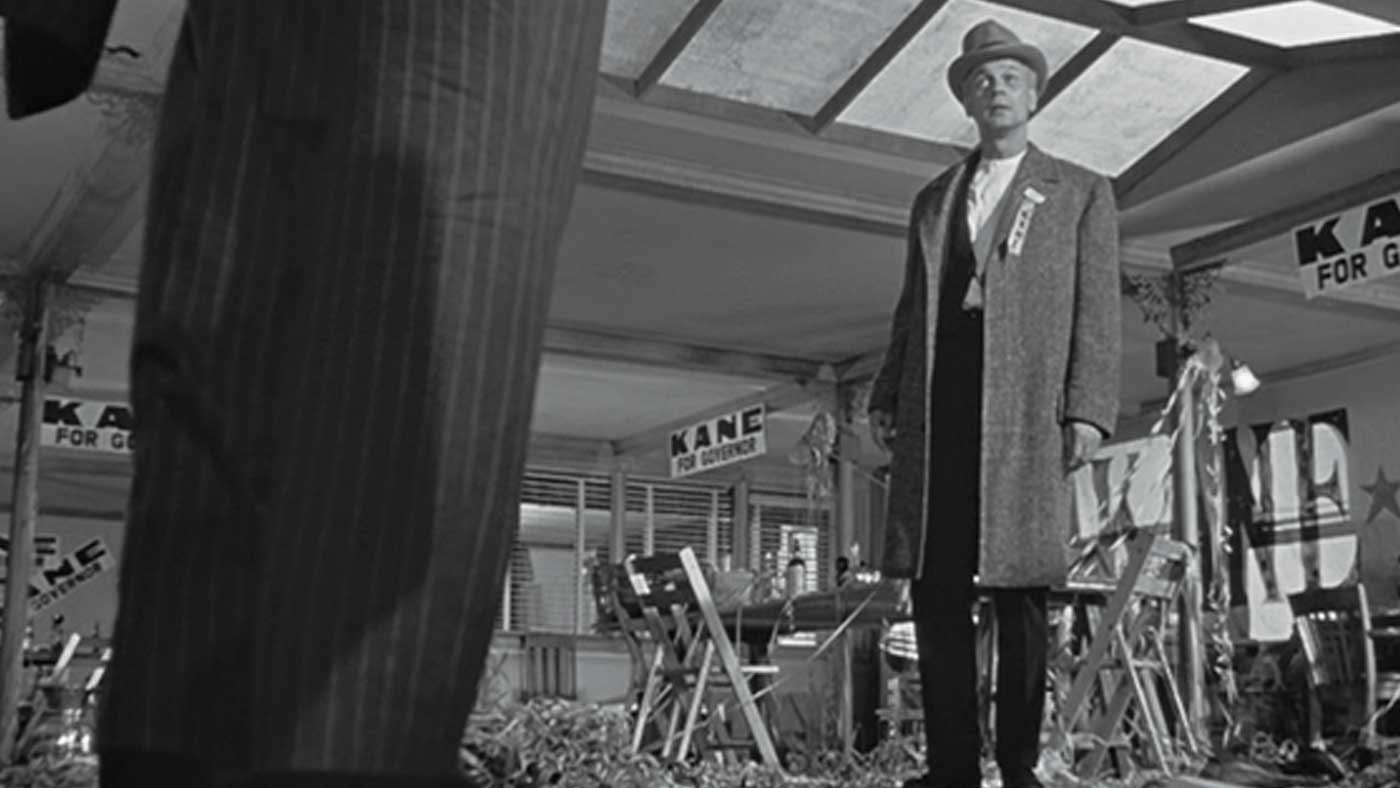
“I like the old masters…by which I mean John Ford, John Ford, and John Ford.” – Orson Welles
Citizen Kane has long been considered one of, if not the greatest American film in history. Orson Welles’ 1941 classic is a watershed moment in Hollywood history, signaling the beginning of filmmakers breaking away from the Studio system of filmmaking. When it was made, Hollywood was at the height of its “industrial” status of making movies. Welles, along with cinematographer Greg Toland, pulled out all of the stops for the young theater director and radio star from the Mercury Theater in New York. Although this film is as close to perfection as you can get, I believe one of its shining moments is the scene between Kane and Jed Leland after Kane has lost the election for Governor of New York.

After Charles Foster Kane gets caught in a ‘Love Nest’ and exposed by his political rival ‘Boss’ Jim Gettys, he not only loses the Governor election but he also loses his marriage when his wife Emily decides to leave him. While crushing losses, both personal and political, would break a man Kane shows no signs of letting go of his power and arrogance. Even when his closest friend and partner Jed Leland comes to see him after the results are in. Welles’ inspiration from John Ford is all over this scene, two major aspects in particular are the set design and the blocking of the actors. Ford loved using real sets, especially with ceilings, not just to show the actors in a natural environment but also to allow himself to be more creative with low angle shots. Here, a 2 minutes-plus scene with minimal cuts and shot at an extremely low angle, this scene had to be done on a natural set. When Jed enters the room to talk to Kane he begins to show his disapproval of what has become of his boss, and his friend for that matter. Hiding behind his drunkenness he lays into ‘Charlie’ letting him know that he can no longer go on trying to control and manipulate people. The most effective use of the low angle camera is the way it portrays Kane, alternating between strength and weakness. Ordinarily the low angle shot of an actor shows them in a dominant powerful position with the audience looking up at them. Welles and Toland really flipped this notion on its head with this scene. At the start of their conversation Kane is standing right in front of the camera, so close that we can only make out his legs below the knees. Jed stands in the midground at an angle in a full shot. As his criticisms begin to get nastier, Kane walks back towards him and now we begin to see Kane looking weaker in the scene despite the fact that we are at his feet looking up at him. As he approaches Jed, Kane gets smaller and smaller in the frame, almost as if Jed’s words are cutting him down to size, until he stops and stands right next to Jed. It is at this point that we see both men, the same size and height, unbeknownst to Kane and his ego, they are on equal ground.
The blocking of the actors is not only an inspiration from Ford but also one of Welles’ greatest strengths as both a theater actor and director. Citizen Kane is one of the first films I can recall seeing and noticing that with its blocking, sets, and camera angles, flows like a Broadway play. The natural sets, most of them raised up on stilts or stages in order to get every angle possible, enabled Welles to perform his magic in every frame. In this scene, despite two cuts, the camera never moves with the actors. Welles and Joseph Cotten pace back and forth, around each other as they deliver their dialogue, mostly cutting and dramatic lines from Cotten. Early on in the scene Welles strolls away from the camera past Cotten and into the background, showing the depth of the frame the same way John Ford would have his actors ride deep into the splendor of Monument Valley back toward the horizon. When Welles returns and continues past Cotten in the other direction he walks right in front of the camera and we see by his eyes that Jed’s harsh words are registering. The scne concludes with both actor in a medium two shot. Kane pours a drink and tries to make a joke about Jed moving to Chicago. Jed brushes it off and demands to be sent, wiping the smile right off Kane’s face. He then delivers one of the classic lines in Hollywood history: “A toast, Jedediah, to love on my terms…the only terms one ever knows…his own.”
Just about any scene from Citizen Kane can be dissected and analyzed and praised. This was filmmaking on “Orson Welles’ terms.” And for that he may just be the greatest filmmaker of all time.
